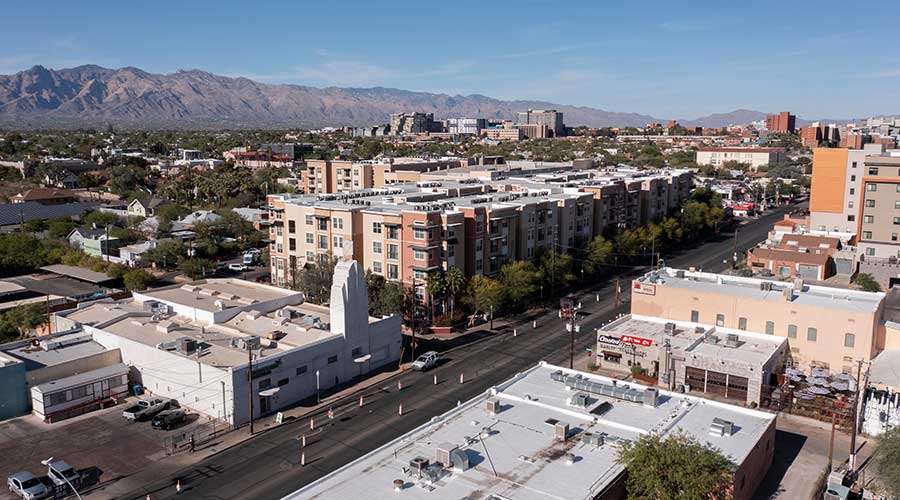Seeking LEED Status in Older Buildings Offers Unique Challenges
By Dave Lubach, Associate Editor
OTHER PARTS OF THIS ARTICLEPt. 1: This Page
Pursuing certification through the Leadership in Energy and Environmental Design (LEED) rating system can create major challenges for maintenance and engineering managers. The task is even greater when the institutional and commercial facilities date back to the days of Thomas Jefferson.
“It certainly presents a challenge for us to access the HVAC and lighting systems to repair and replace them without causing any further damage to the building,” says Ryan Taylor, zone maintenance superintendent for central grounds at the University of Virginia in Charlottesville, whose responsibilities include many of the original buildings designed by Jefferson. “We have to work closely with our historic preservation team to make sure we’re following the appropriate procedures and using proper materials for the repairs. We work closely with them to identify major problems that we need to focus on and make sure we’re taking the right steps to prepare them properly so those buildings can be preserved.”
The university has 23 LEED-certified buildings — including one building at the platinum, four at the gold, and 12 at the silver levels — and infuses sustainability and LEED into its capital development process, from pre-planning to post-occupancy. The maintenance department plays a central role in the LEED-certification process from the development stage.
“On the maintenance side, we are involved in the design review process and work with the architects and engineers to make sure the systems being installed are maintenance-friendly,” Taylor says. “It’s a combination of looking at LEED and looking at maintenance-friendly systems that we can continue to maintain once the building is constructed or renovated.”
Among the primary maintenance challenges for Taylor’s crew are replacing legacy systems such as 50-year-old HVAC and lighting systems, and keeping the infrastructure of centuries’ old buildings from showing their age.
“Some of the buildings on the lawn are almost 200 years old,” says Taylor. “We’ve recently identified masonry problems on one of the pavilions, and it’s in a crawl space that’s not easily accessed. We had somebody go through there recently and inspect conditions, and we found some serious problems.
“It’s just masonry deterioration over time, and we’ll have to spend significant effort with our masonry crew and our structural engineer to go in and make sure we correct the repairs properly to prevent any further damage, and to help protect and preserve it for the future.”
The LEED projects have little effect on the maintenance staff’s day-to-day operations, Taylor says. When new systems are installed and training is conducted, the additional work is added to the daily list of activities.
“Part of incorporating the new systems into the regular workload is being aware of the system, knowing what it does and how to maintain it,” Taylor says. “Once we understand how to maintain them, the process gets ingrained into the normal day-to-day process to keep the systems functional.”
Being part of the LEED-certification discussions early in the planning process has provided long-term benefits for Taylor’s department.
“It’s helped us in being engaged in renovation and construction projects early on, with design reviews to look at the drawings and specifications to talk about what’s being designed so that we can have some influence over that,” he says. “That type of collaborative approach is better for us so that we can identify and install systems that make sense for the long term.”
Being involved early “has been beneficial for us,” he says. “It’s a good thing for other maintenance crews to be engaged in the design process during the construction process, and working with the contractors to see what’s being installed, and then getting the appropriate training from them before building turnover to understand how the system works and how to maintain it.”
Related Topics:











